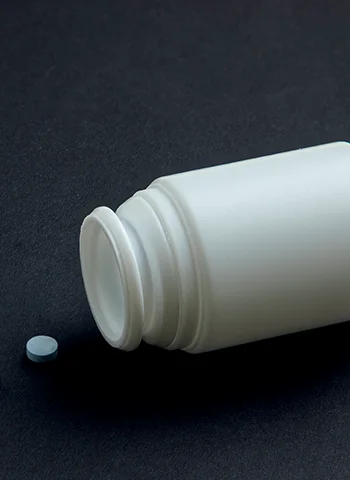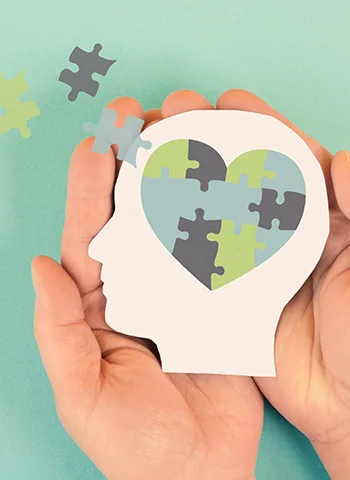Illegal drugs pose a significant challenge to public health, social cohesion, and law enforcement. In the UK, the Misuse of Drugs Act 1971 serves as the cornerstone for managing and regulating substances deemed harmful. Central to this act is the classification system, which categorises drugs into three classes—A, B, and C—based on their potential to harm individuals and society.
In this article, we’ll delve deeply into the classifications, the substances they include, and their implications. We’ll also discuss the controversies surrounding the system and explore potential reforms, providing you with a clear understanding of how the UK handles drug-related issues.
Understanding the Misuse of Drugs Act 1971
The Misuse of Drugs Act 1971 was introduced to regulate controlled substances and curb the increasing misuse of drugs. It serves two primary purposes:
- Protection of Public Health: To safeguard individuals from the physical and mental harm associated with drug misuse.
- Legal Enforcement: To establish penalties for the possession, production, and supply of controlled substances.
Why is the Act Significant?
The Act allows the government to classify substances based on their potential harm. This classification determines the legal consequences for those found in possession of, or involved in the supply of, these substances. Importantly, it also underpins the broader drug policies in the UK, shaping law enforcement priorities and public health strategies.
Let’s explore the classifications in greater detail.
Drug Classifications in the UK
Drugs are categorised into three main classes: A, B, and C. The classification reflects the severity of harm each drug poses to users and society, with Class A being the most dangerous.
Class A Drugs: The Most Dangerous Substances
Class A drugs are substances considered to have the highest potential for harm, both physically and psychologically. They are often highly addictive and can lead to severe health complications, including overdose and death. Additionally, these drugs are closely tied to organised crime and other societal issues.
Examples of a Class A Drug
1. Heroin:
- What is it?: A powerful opioid derived from morphine.
- Risks: Highly addictive, heroin use can result in respiratory depression, infectious diseases from needle sharing (e.g., HIV and hepatitis), and fatal overdoses.
- Social Impact: Heroin addiction often leads to unemployment, homelessness, and crime.
2. Cocaine:
- What is it?: A stimulant extracted from coca leaves, commonly used recreationally for its euphoric effects.
- Risks: Cocaine can cause heart attacks, strokes, and severe mental health issues such as paranoia and psychosis.
- Social Impact: Cocaine is frequently linked to violence and gang activity.
3. Ecstasy (MDMA):
- What is it?: A synthetic drug popular in nightlife settings for its mood-enhancing effects.
- Risks: Ecstasy can cause dehydration, overheating, and long-term mental health problems like depression and anxiety.
- Social Impact: Its misuse in party settings often results in emergency hospitalisations.
4. Methamphetamine (Crystal Meth):
- What is it?: A synthetic stimulant with a high potential for addiction.
- Risks: Prolonged crystal meth use can cause severe dental decay (“meth mouth”), weight loss, and psychosis.
- Social Impact: Meth production and use often devastate communities, contributing to crime and poverty.
Legal Penalties for Class A Drugs
- Possession: Up to 7 years in prison, an unlimited fine, or both.
- Supply and Production: Up to life imprisonment, an unlimited fine, or both.
Class B Drugs: Significant Risks
Class B drugs are less harmful than Class A substances but still pose serious risks. They can lead to addiction, mental health issues, and physical harm when misused.
Examples of a Class B Drug
1. Cannabis:
- What is it?: A psychoactive drug from the cannabis plant, used recreationally and medicinally.
- Risks: Chronic cannabis use can lead to mental health issues like anxiety and psychosis, particularly in younger users.
- Social Impact: While debates about its legalisation persist, cannabis remains the most widely used illegal drug in the UK.
2. Ketamine:
- What is it?: A dissociative anaesthetic often misused for its hallucinogenic effects.
- Risks: Prolonged use can cause bladder damage, memory loss, and addiction.
- Social Impact: Recreational ketamine use often results in public nuisance and medical emergencies.
3. Amphetamines:
- What is it?: Stimulants that increase energy and focus, often misused for performance enhancement.
- Risks: Prolonged use can cause heart problems, paranoia, and dependence.
- Social Impact: Amphetamines are sometimes linked to reckless behaviour and accidents.
4. Synthetic Cannabinoids:
- What is it?: Lab-created substances that mimic THC, the active component in cannabis.
- Risks: These can cause unpredictable effects, including seizures, psychosis, and death.
Legal Penalties for Class B Drugs
- Possession: Up to 5 years in prison, an unlimited fine, or both.
- Supply and Production: Up to 14 years in prison, an unlimited fine, or both.
Class C Drugs: Lower Risk, Still Harmful
Class C drugs are the least harmful among controlled substances but still pose risks of addiction and misuse.
Examples of Class C Drugs
1. Benzodiazepines (e.g., Valium, Xanax):
- What is it?: Prescription drugs used to treat anxiety and insomnia.
- Risks: Misuse of benzodiazepines can lead to dependence, overdose, and withdrawal symptoms.
- Social Impact: Over prescription has contributed to a rise in addiction cases.
2. GHB (Gamma-Hydroxybutyrate):
- What is it?: A depressant with sedative effects.
- Risks: Misuse can lead to unconsciousness, coma, and overdose.
- Social Impact: GHB is often associated with drug-facilitated sexual assault.
3. Anabolic Steroids:
- What is it?: Substances used to enhance muscle growth and physical performance.
- Risks: Prolonged use can cause heart disease, liver damage, and aggression.
- Social Impact: Steroid misuse can lead to violence and deteriorating mental health.
Legal Penalties for Class C Drugs
- Possession: Up to 2 years in prison, an unlimited fine, or both.
- Supply and Production: Up to 14 years in prison, an unlimited fine, or both.
2. Economic Costs
- Beyond healthcare, the economic burden includes increased policing, emergency response efforts, and social services.
- Local businesses in affected areas often report decreased foot traffic due to safety concerns, further damaging local economies.
Temporary Class Drugs
The Temporary Class Drug Orders (TCDOs) allow the government to quickly control substances that pose an immediate risk to public health. These drugs are treated as Class B substances while their full classification is under review.
Examples of Temporary Class Drugs
- Synthetic Cathinone’s (e.g., “bath salts”).
- NBOMe Compounds: Hallucinogens with dangerous and unpredictable effects.
Temporary controls provide a proactive approach to managing emerging drug trends.
Factors Influencing Drug Classification
The decision to classify a drug is not arbitrary. The following factors are considered:
- Health Risks: The potential for addiction, overdose, and long-term harm.
- Addictiveness: How likely the drug is to cause dependency.
- Social Impact: The broader effects on families, crime rates, and communities.
- Scientific Evidence: Ongoing research and data on the drug’s effects.
The Advisory Council on the Misuse of Drugs (ACMD) plays a critical role in evaluating these factors and advising the government.
The Debate Surrounding Drug Classifications
The UK’s drug classification system is often criticised for being outdated and inconsistent.
Key Criticisms
- Scientific Discrepancies: Some argue that the classifications do not align with current scientific evidence. For example, alcohol and tobacco, which are legal, are considered more harmful than some Class B and C drugs.
- Focus on Punishment: Critics suggest that punitive measures fail to address the root causes of drug misuse.
Calls for Reform
- Decriminalisation: Treating drug use as a public health issue rather than a criminal one.
- Reclassification: Updating drug categories to reflect modern research.
- Harm Reduction: Introducing more initiatives like needle exchange programmes and supervised consumption sites.
The Role of Public Education
While legislation is essential, education is a powerful tool in combating drug misuse.
Effective Educational Strategies
- School Programmes: Teaching young people about the dangers of drugs.
- Community Outreach: Providing resources and support for at-risk populations.
- Public Campaigns: Raising awareness through media and government initiatives.
Conclusion
The classification of illegal drugs in the UK reflects an ongoing effort to balance public health concerns with legal enforcement. While the current system has its strengths, it also faces significant challenges, particularly in adapting to evolving scientific knowledge and societal attitudes.
Understanding these classifications empowers individuals to make informed choices and engage in meaningful discussions about drug policies. As the debate around reform continues, one thing remains clear: addressing drug misuse requires a multifaceted approach that prioritises health, education, and compassion.













